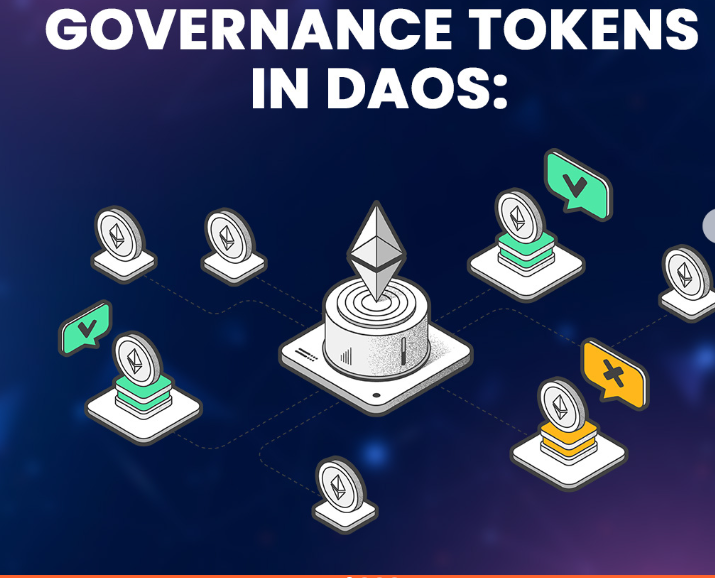Navigating the Seas of Governance in Web3
 Nicodemus kiptoo
Nicodemus kiptoo
As the Web3 landscape continues to evolve, one of the central pillars shaping its infrastructure is governance. Unlike traditional centralized systems where decisions are made by a single authority, decentralized systems in Web3 rely on innovative governance models to ensure transparency, inclusivity, and community-driven decision-making. In this comprehensive article, we embark on a journey to explore the diverse governance frameworks in Web3, examining their mechanisms, implications, and the role they play in shaping the decentralized future of the internet.
Understanding Governance in Web3
Governance in Web3 refers to the processes, mechanisms, and structures through which decisions are made within decentralized networks and protocols. It encompasses a wide range of activities, including protocol upgrades, resource allocation, dispute resolution, and community engagement. The primary goal of Web3 governance is to foster transparency, decentralization, and alignment of incentives among network participants.
Types of Governance Models
1. Token Holder Governance (On-chain Governance):
Description: Token holder governance allows holders of native tokens within a network to participate in decision-making through on-chain voting mechanisms.
Mechanisms: Proposals are submitted and voted on directly through smart contracts, with voting power typically proportional to the amount of tokens held.
Examples: DAOs (Decentralized Autonomous Organizations), DeFi protocols like Compound and Uniswap.
2. Protocol-Defined Governance:
Description: In protocol-defined governance, rules and parameters are hardcoded into the protocol itself, dictating how decisions are made.
Mechanisms: Governance rules are predefined in the protocol's codebase, often requiring specific conditions or majorities for changes to occur.
Examples: Tezos with its self-amending protocol, MakerDAO's stability fee adjustments.
3. Delegate/Representative Governance:
Description: Delegate governance allows token holders to delegate their voting power to elected representatives or delegates.
Mechanisms: Delegates are elected through on-chain or off-chain mechanisms, and they vote on behalf of their delegated stake.
Examples: Delegated Proof-of-Stake (DPoS) networks like Polkadot and Cosmos.
4. Liquid Democracy:
Description: Liquid democracy combines elements of direct and representative democracy, allowing token holders to vote directly or delegate their votes to trusted individuals.
Mechanisms: Token holders can vote on proposals themselves or delegate their votes to representatives, who can further delegate votes.
Examples: Aragon's AragonOS framework, which allows for customizable liquid democracy structures.
Implications and Considerations
1. Governance Efficiency and Speed:
Different governance models have varying levels of efficiency and speed in decision-making.
On-chain governance may offer quick decision-making but could lead to voter apathy or manipulation.
Off-chain or representative governance may provide more deliberation but could be slower in implementation.
2. Sybil Resistance and Voter Participation:
Sybil resistance mechanisms are crucial to prevent manipulation by creating barriers to obtaining voting power.
Encouraging voter participation through incentives, rewards, or penalties is essential for the legitimacy of governance decisions.
3. Decentralization and Power Distribution:
Governance models should aim to distribute power and decision-making authority among diverse stakeholders.
Centralization of decision-making can lead to challenges such as plutocracy or oligarchy within the network.
Real-World Examples and Case Studies
1. Uniswap's Token Holder Governance:
Uniswap, a leading decentralized exchange (DEX), implemented token holder governance through its UNI token.
Token holders can propose and vote on changes to protocol parameters, fee structures, and other important decisions.
2. Aragon's DAO Framework:
Aragon offers a flexible DAO framework that allows organizations to customize their governance structures.
Organizations can choose between different governance models, including liquid democracy and delegated voting.
Future Directions and Challenges Ahead
1. Scalability and Efficiency:
As decentralized networks grow in size and complexity, scalability solutions for governance processes become critical.
Layer 2 scaling solutions, such as optimistic rollups or sidechains, could alleviate congestion and reduce costs.
2. Legal and Regulatory Considerations:
Governance models must navigate legal frameworks and regulatory requirements, particularly in areas such as voting rights and tokenomics.
Compliance with local laws and international standards presents challenges for global decentralized networks.
3. Inclusivity and Diversity:
Ensuring broad participation and representation in governance processes is essential for the legitimacy and effectiveness of decisions.
Education, outreach, and incentivization programs can encourage diverse stakeholder engagement.
Conclusion: Charting the Course for Decentralized Governance
Governance in Web3 represents a dynamic and evolving landscape, where innovative models and frameworks are reshaping the way decisions are made within decentralized networks. By fostering transparency, inclusivity, and alignment of incentives, Web3 governance holds the potential to create more resilient, equitable, and community-driven ecosystems. As we navigate the seas of decentralized governance, collaboration, experimentation, and a commitment to core principles will guide us toward a decentralized future where power is distributed, voices are heard, and the internet is truly owned by the people.
Subscribe to my newsletter
Read articles from Nicodemus kiptoo directly inside your inbox. Subscribe to the newsletter, and don't miss out.
Written by

Nicodemus kiptoo
Nicodemus kiptoo
DevRel,frontend dev,web dev, Discord/social media management, graphics, Business adm,web3 education|| Equality advocate